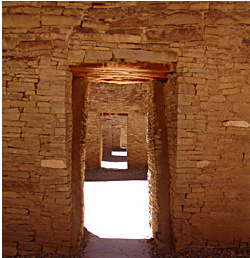Publication Date
6-6-1966
Abstract
This study describes and analyzes the patterns of usage associated with the hallucinogenic plants of Meso-America prior to the conquest and during the colonial period. Although distinctive features of the utilization of specific hallucinogens are noted, primary emphasis is placed on the use of the plants in general. Both continuities and changes from the pre-conquest and colonial periods to the present are indicated by the study. Separate descriptions of each hallucinogen or group of hallucinogens based principally on data in colonial sources are presented as essential to the analysis. The specific plants discussed include the hallucinogenic mushrooms, peyote, the Daturas, and several unidentified hallucinogens. Botanical descriptions from the early sources are incorporated along with data on psychotropic effects and the manner of utilization. The marital in the descriptive sections forms the basis of a comparative interpretation of the pre-conquest and colonial patterns of usage associated with hallucinogens. As a geographical pattern of usage, distribution is discussed first, followed by an analysis of usage in terms of Linton’s concepts of form, use, function, and meaning. Regarding the specific uses of hallucinogens, a dichotomy between practical medicinal and supernatural-religions utilization is proposed. Indications of possible non-medicinal secular uses are also presented and examined. Although the specific uses of the hallucinogens constitute the primary topic of the comparative interpretation, several corresponding functions and meaning are suggested. For example, the practical-medicinal utilization of hallucinogens is associated with the function of restoring healthy and alleviating anxiety concerning illness. In the supernatural-religious category, the pre-conquest divinatory use of hallucinogens for the purpose of discovering future events may serve to allay an all-pervading anxiety concerning the future, while the colonial divinatory use of the plants for detecting witches, thieves, and other culprits may function as a means of social control. Finally, specific applications of this study to problems for further ethnographic research on the utilization of hallucinogens are proposed in relation to distribution, use, and function.
Document Type
Thesis
Language
English
Degree Name
Anthropology
Level of Degree
Masters
Department Name
Anthropology
First Committee Member (Chair)
Nancie L. Solien de Gonzales
Second Committee Member
Karl H. Schwerin
Third Committee Member
Marc Steven Simmons
Recommended Citation
Mudd, Rosemary B.. "The Hallucinogens of Meso-American: An Ethnohistorical Survey." (1966). https://digitalrepository.unm.edu/anth_etds/216

